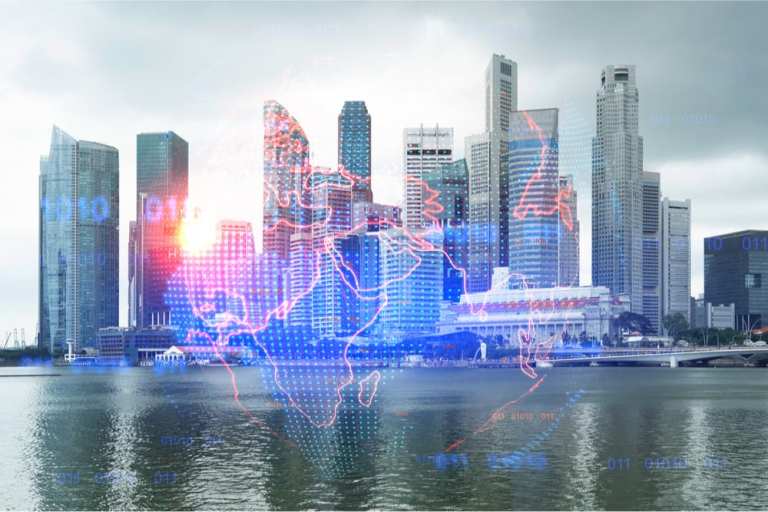Why Venture Capital Is Accelerating In Asia — Why It’s Different From The Valley

Despite the pandemic, venture capital dollars are flowing freely to nascent firms in Asia that are tackling the need for contactless interactions and platforms that match supply and demand — setting the stage for innovation on the other side of the public health crisis.
In an interview With Karen Webster, Craig Dixon, general partner and CEO of Accelerating Asia, an independent startup accelerator based in Singapore, said helping startups scale and navigate the VC realm requires a focus on telling the right story — and generating more than top line growth.
The conversation came against a backdrop where the number of fundraising deals in the Southeast Asian region were higher in 2020, as measured through the second quarter — more than 60 percent higher over the second quarter of last year, in fact, to 184 deals as measured by DealStreetAsia.
Accelerating Asia, which graduated its first startup cohort late last year, has been taking meetings with more than 2,000 startups annually, and with 450 applications for its latest recruitment cycle has seen momentum in data analytics and software, among other verticals.
In an effort to help startups hit the ground running, Accelerating Asia will launch its Angel360 and Amplify products within weeks. Amplify is billed as a virtual program to guide company founders as they navigate the early stages of running a startup; Angel360 is an initiative that will offer a “beginner’ s guide” for angel investors interested in the region.
Drilling down into some tailwinds the portfolio is seeing amid the digital shift spurred by COVID-19, Priyoshop, an eCommerce platform focused on small-town micro-entrepreneurs with half a million customers, saw 500 percent growth in GMV in July. Another startup alumnus, iFarmer, provides farmers with access to finance, technology-driven advisory as well as premium markets for their produce. The company has worked with thousands of farmers across Bangladesh and facilitated close to $1 million in financing for farming. One startup that graduated last year is BeamAndGo, based in the Philippines, that focuses on cross-border remittances.
The startup landscape in Singapore is densely populated, said Dixon, with more than a hundred accelerators in the region. Many of them are government, corporate or university led, Dixon said.
By way of contrast, he said, Accelerating Asia is run by founders who support founders. The other defining characteristic of the VC fund is that it focuses on pre-Series A stage companies (80 percent of them have raised money previously) where no other programs cater to these firms, which are just getting their operations running.
“Once you are on your way to revenues and customers you start to have a whole new set of challenges around growing your team, fundraising and telling your story,” said Dixon.
Before COVID … And After
As might be expected, there was one world before COVID-19 and one world after the coronavirus hit — and Dixon noted that the pandemic has been both tailwind and catalyst for tech-driven innovation in the region. Traditional companies have had to embrace tech at an accelerating pace.
That quickened pivot is illustrated by advances in retail, medical and education where firms have dramatically changed their budgeting devoted to changing the way they interact with consumers — where once face-to-face interactions must be handled remotely.
He noted that startups that have been helped by Accelerating Asia include Medlink, a Vietnam-based firm that facilitates the online ordering and delivery of drugs — and ensures they are not counterfeit — and another firm that just launched that measures air quality inside buildings.
All told, a significant percentage of the Accelerating Asia portfolio has seen an uptick in business amid the pandemic, noted Dixon. And for those that have seen some impact from the pandemic, they still generate revenues and have raised funds previously, so have at least some insulation from external shocks, along with the ability to cut costs.
Accelerating Asia has also trained its sights on artificial intelligence (AI) in education technology — which he defined as “human plus machine” — that aids in remote learning.
Meeting and learning about 2,000 startups annually is no easy task, though Dixon broke it down a bit: two Accelerating Asia cohorts run events in several cities, and run masterclasses and pitch competitions.
As to the common hurdles these pre-Stage A companies face as they go through the accelerator (and within 12 months, ideally, are ready to get checks cut from venture capitalists):
It’s Different From The Valley
“A lot of it is storytelling,” said Dixon, “articulating your business potential, what you are doing and why.” It’s also important for startup founders to understand and illustrate their organic growth potential. He noted that stark differences exist between the startup culture in Asia and the United States’ fabled Silicon Valley. In the Valley, he said, Americans tend to be self-promotional, whereas in Asia, “the storytelling and qualitative aspects things that aren’t really focused on here.”
A notable difference, too, in Asia vs. the West, as Dixon said: “You can’t really grow a business here [in Asia] without revenue beyond pre-seed or maybe seed funding … investors need to see revenue traction.”
As Dixon said, many startups present huge top-line metrics, but due to churn and lack of economics do not turn potential into profits. Solely chasing profits is a red flag, he said, but positive cash flow is a plus as a company typically moves along the path from seed funding to a series A round across an average of 18 months.
The perspective from investors has changed, too, in Singapore, he said, as “here, you are forced to monetize much earlier.”